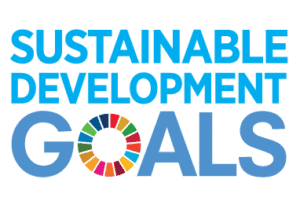SHARE
Thoughts
In 2015, the United Nations set as part of their Sustainable Development Goals (SDG) 11—[to] “Make cities inclusive, safe, resilient, and sustainable”[1].
When talking about resilient cities, most of us probably think of our physical environment, rising sea levels and thermal comfort. However, the built environment can be a great enabler of community growth and strengthening social resources.

![]()
Source: United Nations Sustainable Development Goals, 2019
[SDG guidelines for use]
Social Value strategies are as important for the built environment as they are for businesses in achieving SDG 11. In this article, we discuss the five key challenges of implementing Social Value in real estate.
- Determining a strategy focus – A valid ‘one size fits all’ approach is non-existent in Social Value. Although there is a consensus on the wide range of factors contributing to Social Value, what may be in or out of scope at organisation or asset level should be subject to an intelligent and tailored vetting process. Focus can be determined by aligning the values of your organisation and the socio-economic needs of the area for the strategy in question.
- Temporality– The design phase of our built environment projects has so much scope for influencing Social Value outcomes, that this might cause clients focusing on Social Value in constructed assets to feel restricted. Whilst physical factors can be used to influence the way building users work, play and feel, there are many aspects of building management which can influence the same Social Value outcomes. Start by scoping in which outcomes you can and can’t influence, this will also help to focus on what means the most to your building’s users.
- Measuring outcomes – Measurement is the most commonly questioned aspect of Social Value. The response can vary largely depending on what your Social Value strategy prioritises. Whilst qualitative approaches to recording Social Value are useful in capturing full social impact, it is important to use Social Return on Investment (SROI) [ED1] to calculate numerical evidence to validate outcomes against[2]. There are a number of SROI calculation tools available to facilitate this. Research carefully which one is right for your organisation.
- Social Value Across Borders – Interest in Social Value is quickly becoming a concern of organisations and investors operating both inside and outside of the U.K. It’s encouraging to see businesses taking an interest in creating socio-economic benefit to society. Their interest is a testament that pursuing Social Value brings wider benefits on an organisational level. SROI requires each action to be allocated a value[3]. In the U.K, we benefit from a wealth of existing research and valuation banks. These values have been thoroughly researched, tried and tested based on regional and national socio-economic research. The next challenge is to look closer at making SROI calculation accessible through similar research outside of the U.K.
- Balancing commerciality with social impact – The built environment is a largely for-profit industry[4]; therefore the commercial aspect of Social Value will always be important. The key thing for clients to remember when communicating their Social Value to investors will be that the figure next to the £ sign represents value to society. Value to the investor is predominantly delivered through improvements to the assets commercial profile. The rapid development of resources to support Social Value in industries and nations further afield is active proof of its benefits.
EVORA is now supporting our clients to develop and deliver Social Value programmes. You can read more about this topic in our blog in the article ‘What is Social Value?‘ Alternatively, please don’t hesitate to get in touch if you would like to discuss Social Value in more detail.
[1] United Nations. 2015. Sustainable development goals – United Nations. [online] United Nations Sustainable Development
[2] Watson, K. & Whitley. T, 2016. Applying Social Return on Investment (SROI) to the built environment, Building Research & Information, 45:8
[3] NEF. 2017
[4] Mulgan, G. 2010. Measuring social value. Stanford Social Innovation Review, 8(3), pp.38–43
*The content of this publication has not been approved by the United Nations and does not reflect the views of the United Nations or its officials or Member States.* Visit the website.



